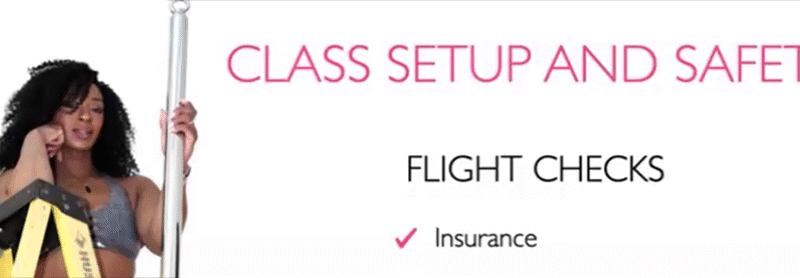A train-cation is a trip (usually away from home) where you focus for a specific…

How to create a drip marketing email campaign for pole dance businesses
In this resource post, we talked about the importance of building your email list, a collection of email addresses from anyone who has subscribed to your newsletter, blog, or website; bought something from you; or gathered in-person, such as for an event.
With the continued issues of shadow banning and social media advertising rejecting pole business ads, growing your email list is more important to growing your business than ever before.
Growing your email list may take time, but have patience. Remember—never buy an email list, and don’t share your email list (make sure this is clear in your privacy policy). Sending emails to people who did not sign up explicitly (signing up via a mailing list tool, like a pop up) or implicitly from your business (such as buying something but not ticking the box to join the mailing list) not only is poor business practice, it might be illegal under the CAN-SPAM act and can get you banned from using an email service.
This resource post is a deeper dive into what to do when you have a new sign-up for your email list and how to nurture your sales leads/potential new customers. It can take several “touches” for a new customer to make a sale. A touch is when a potential customer visits your website, social media presence, or physical location; calls you on the phone; sends an email; or any other way a customer researches or checks out your business.
This information can be used and adapted for any type of business, whether you sell a product or a service.
Offer people a reason to sign up for your email list
While some will sign up for your email list because they are generally interested in receiving your content, consider offering a free download, a discount to a class or to your merchandise, or other enticement for them to sign up and give you their email address. Think about how many times you gave up your email address to get some cool piece of contact or access to a discount? Free incentives or discounts can be very effective!
Logistically, one easy way to do this is to install a pop-up on your website using a (mostly free) tool like MailMunch that will integrate directly into your email management service. Email management services like MailChimp, ConstantContact, or others (there are tons) collect those email addresses in a central location.
Another easy way to do this is to create a landing page. A landing page is a standalone web page (typically not linked from your navigation menu) created specifically for a marketing or advertising campaign. It’s where a visitor “lands” after they click on a link in an email, or through online ads from Google, Bing, YouTube, Facebook, Instagram, Twitter or other. Create a landing page on your own or use a tool, such as Unbounce. Even some email management services, like ConstantContact, can help with this.
What happens after they sign up for your list?
Once a potential customer signs up for your email list, they enter your drip marketing funnel. Drip marketing is an email marketing strategy (also known as marketing automation) composed of multiple emails sent out at specific times and dates (“dripped”) telling your new sign-ups about offers and encouraging them to buy something.
Create your drip marketing funnel automation directly in your email management tool. Establish a series of emails and define the frequency for when the system will send an email to your email list(s). The tool will automatically handle sending emails when a trigger event (such as signing up for your email list) happens as well as when customers unsubscribe from your list. Always give people the option to opt-out of your emails.
If you use Shopify or other ecommerce tools, you have access to other trigger events beyond signing up for your email list, such as when someone abandons a cart before making a sale.
What should these emails say?
Here’s where you must do some research about your customers or your intended customers. Put yourself in their shoes. What questions do they have about your product or service? How can you put them at ease with their decision to invest in your brand? Do you need to educate them on how your community works? Or how your pricing works? How can you make them feel the most comfortable with their decision to make a purchase with you?
Once you’ve done some thinking about who your customers are and what questions they might have, you can start building their journey to making a sale. The buyer’s journey is a framework that acknowledges the progression from research and decision making that hopefully culminates in a purchase. Use this information to craft your emails. Not every person is going to buy right away and may be turned off if all your communications to them are “BUY BUY BUY.” Maybe there are smaller steps they could take or maybe you could educate them about specific things you sell that they may also be interested in. Consider sending things like educational emails, case studies, or other things relevant to your business. Make sure to showcase your brand in how the emails look, how they sound, and in what you share.
Remember, your email list is a critical part of building your business! Grow your list and then nurture it with a drip marketing email campaign full of useful information for your new, potential customers—it can take several touches before you make a sale!



